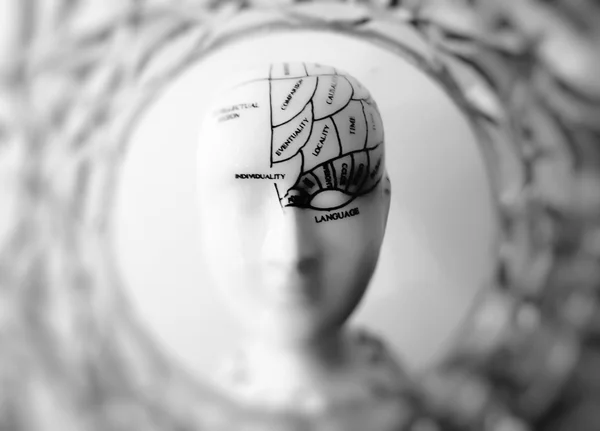
What happens in the brain when learning languages?
It is known that learning a language is easier during childhood because the brain is still malleable. However, adults and the elderly from a neuroscientific perspective can also assimilate foreign languages perfectly. In this article we will show you: What happens in the brain when learning languages?
Where do researchers place language in the brain?
Although monkeys are also quite intelligent animals, as they use tools to access their food, they also have feelings of identification with something or someone and are capable of communicating with sounds; However, they cannot combine sounds or words with certain rules like humans, who are the only ones who have that ability. Thus, language is only attributable to our brain's ability to know.
The brain uses the structures it has created to contain the native language. Neuroscientists identify two regions of language with which we are born, the first is Broca's area in the left frontal lobe that allows us to create sentences with certain rules ( syntax ), and the second is Wernicke's area in the lobe left temporal , which has the mission of processing the meaning of words and sentences ( semantics ).
Babies and language absorption
Babies also use Wernicke's brain region to assimilate and store words at the same time. At six years of age and even before they begin to speak, babies can perform the double function of assigning a term to objects and recognizing mistakes, because at this age the brain is very plastic, malleable and retains new words.
From the first year, children are already able to classify the words they have learned, for example an apple is an apple whatever its color. At three years of age they already understand simple sentences thanks to the said Wernicke region. For more difficult grammatical sentences, children need Broca's area, which develops with age. To understand complex sentences, the two linguistic regions must be connected.
How do foreign languages modify the brain?
In the process of learning a foreign language in a student, it is similar to those of a child who is in the phase of learning his native language. In this process Wernicke 's area is initially active. The first thing we try is to learn the meaning of words using facial gestures and expressions, and we save new vocabulary, for example, "apple" for apple.
Once we have mastered the basic vocabulary, we begin to pay attention to the particularities and grammatical structures of sentences. The more we learn about grammar, the more the second region , Broca's area, intervenes.
In children who grow up bilingual, these same processes take place in parallel for the two languages. Children separate the two languages and do not mix them. In this regard, neuroscientists have no basis to explain how children achieve this peak performance. But one thing is certain, if the parents speak to the child in their native language (example: the mother only speaks Spanish and the father only French), the child can easily differentiate the languages.
Current research
Neuroscientists are challenged to investigate exactly how the learning process is different between the foreign language and the native language, and they will have to answer these questions: Is it one of the increasingly active linguistic regions? Are other regions of the brain involved? With the help of magnetic resonance imaging ( MRI ) and electroencephalogram ( EEG ), researchers can visualize structures and observe how the brain learns.
Scientists at the Max Planck Institute for Human Brain and Cognitive Sciences used these methods to study Russian, Dutch, Japanese, and French learning German, for example. They asked them grammatically incorrect sentences and compared their brain responses to native German speakers.
In the case of native speakers, phrases like "The bread is being eaten" quickly hit Broca's area like an alarm system. On the other hand, German students also notice the mistake, but take longer to realize it. The brain has not yet installed the automatic alarm system.
But, in the case of advanced students, the researchers were able to recognize that Broca's area is activated when it comes to incorrect sentences. In the assumption of test persons who speak fluent and near perfect German, the brain response is ultimately exactly the same as that of a native speaker. The bottom line is also that with time and good practice, the human brain can master language learning even in adulthood.
Language learning trains the brain
For a long time parents and teachers believed that growing up bilingual, children did not respond well to studies. Until the 1960s, specialists believed that bilingual people were more clumsy, today it is known that multilingualism activates children.
In Canada, because it is a country where there are many people who speak English and French, an intelligence study was carried out, in which it was shown that children who spoke both languages obtained better results in the intelligence test than monolingual children.
Since then studies carried out on multilingual people have discovered other benefits of foreign language learning. Your brain is always busy choosing the correct language and suppressing unnecessary words and grammar rules.